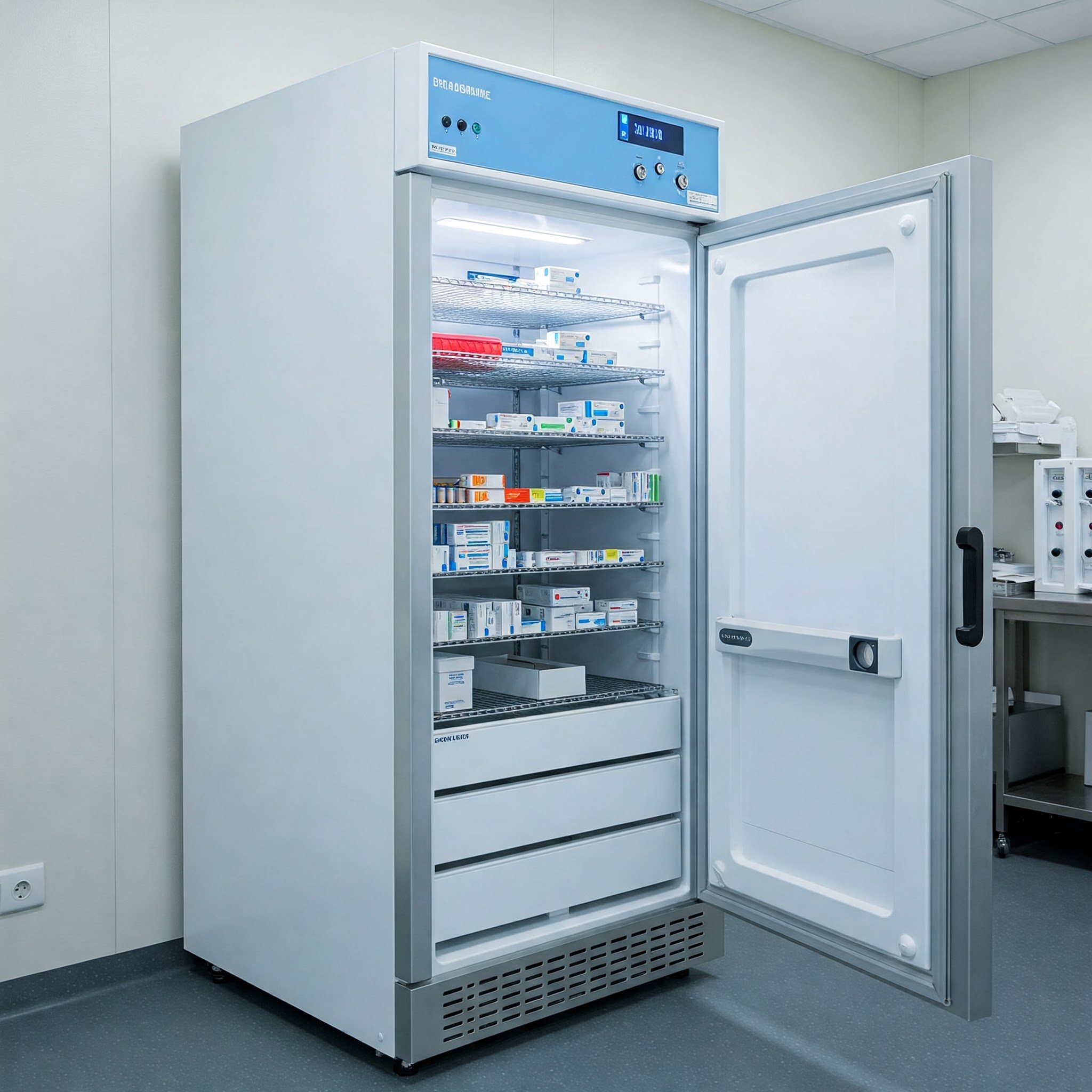Medical Refrigeration: Ensuring Safe Storage for Sensitive Materials
Medical refrigeration plays a vital role in the healthcare sector by preserving sensitive materials such as vaccines, medications, blood samples, and laboratory specimens. Designed for precision and reliability, these refrigerators are essential for maintaining the efficacy and safety of critical items in hospitals, clinics, laboratories, and pharmacies.
What Is Medical Refrigeration?
Medical refrigeration refers to specialized refrigeration equipment designed to store temperature-sensitive medical and laboratory materials. Unlike standard refrigerators, these units are equipped with advanced temperature controls, alarms, and monitoring systems to ensure consistent cooling and compliance with healthcare regulations.
Key Features of Medical Refrigeration
- Precise Temperature Control
- Maintains a consistent temperature range (commonly +2°C to +8°C for vaccines and medications).
- Temperature Monitoring
- Equipped with digital displays and alarms to monitor and alert for temperature fluctuations.
- Uniform Cooling
- Fan-forced circulation ensures even cooling throughout the unit.
- Lockable Doors
- Provides security for sensitive and valuable medical materials.
- Alarm Systems
- Alerts users in case of power failures, temperature deviations, or door openings.
- Backup Power Support
- Some models include battery backups or compatibility with external power sources.
- Anti-Microbial Coatings
- Interior surfaces designed to prevent contamination and ensure hygiene.
- Compliance with Standards
- Meets healthcare regulations such as WHO guidelines and CDC recommendations for vaccine storage.
Types of Medical Refrigerators
1. Vaccine Refrigerators
- Purpose: Store vaccines at a stable temperature to maintain potency.
- Features:
- Narrow temperature range (+2°C to +8°C).
- Data logging for regulatory compliance.
- Alarms for temperature breaches.
2. Blood Bank Refrigerators
- Purpose: Preserve blood and blood components at specific temperatures.
- Features:
- Temperature range (+2°C to +6°C).
- Agitation systems for plasma and platelets.
- Advanced monitoring systems.
3. Pharmacy Refrigerators
- Purpose: Store medications and drugs requiring refrigeration.
- Features:
- Adjustable shelving for various product sizes.
- Locks for controlled access.
- Energy-efficient operation.
4. Laboratory Refrigerators
- Purpose: Preserve research samples, reagents, and biological materials.
- Features:
- Wide temperature range (from below freezing to room temperature).
- High-capacity storage.
- Precise temperature control.
5. Ultra-Low Temperature (ULT) Freezers
- Purpose: Store materials at extremely low temperatures (-70°C to -86°C).
- Features:
- Ideal for long-term storage of specimens and vaccines.
- Requires specialized compressors and insulation.
Applications of Medical Refrigeration
- Hospitals and Clinics
- Storing vaccines, blood, and patient medications.
- Pharmacies
- Preserving temperature-sensitive medications and injectable drugs.
- Laboratories
- Keeping biological samples, reagents, and chemicals at optimal temperatures.
- Blood Banks
- Storing and preserving blood products for transfusions.
- Research Institutions
- Preserving critical samples and conducting temperature-sensitive experiments.
Benefits of Medical Refrigeration
- Preservation of Efficacy
- Ensures that vaccines, medications, and samples remain effective and safe for use.
- Regulatory Compliance
- Meets strict healthcare and laboratory standards for temperature-sensitive materials.
- Enhanced Patient Safety
- Prevents the degradation of critical materials, reducing risks to patient health.
- Reduced Waste
- Minimizes spoilage of expensive materials due to temperature inconsistencies.
- Data Recording
- Provides documentation for audits and regulatory inspections.
- Energy Efficiency
- Modern models are designed to consume less energy while maintaining optimal performance.
Maintenance Tips for Medical Refrigeration
Daily Maintenance
- Monitor Temperature Logs: Ensure temperatures are within the desired range.
- Inspect Doors: Check for proper sealing to prevent cold air leaks.
Weekly Maintenance
- Clean Interior Surfaces: Use approved disinfectants to maintain hygiene.
- Check Alarms: Test alarm systems for functionality.
Monthly Maintenance
- Inspect Shelving and Storage Areas: Ensure no obstructions to airflow.
- Clean Condenser Coils: Remove dust to improve efficiency.
Annual Maintenance
- Professional Inspection: Hire a technician to check the cooling system and calibrate sensors.
- Replace Worn Parts: Replace gaskets, filters, and other components as needed.
Troubleshooting Common Issues
- Temperature Fluctuations
- Cause: Door not fully closed, blocked vents, or faulty thermostat.
- Solution: Check the door seal, clear vents, and calibrate or replace the thermostat.
- Power Failures
- Cause: Electrical issues or power outages.
- Solution: Use a backup power source or UPS system.
- Frost Build-Up
- Cause: Excessive humidity or frequent door openings.
- Solution: Minimize door usage and defrost regularly.
- Unusual Noises
- Cause: Loose components or compressor issues.
- Solution: Tighten parts and consult a technician for compressor repairs.
- Alarm Activation
- Cause: Temperature deviations, power loss, or sensor faults.
- Solution: Investigate the root cause and reset the alarm.
Choosing the Right Medical Refrigerator
- Purpose
- Identify whether you need it for vaccines, blood storage, medications, or research samples.
- Capacity
- Choose a size that fits your storage needs and available space.
- Temperature Range
- Ensure the unit maintains the required temperature for your materials.
- Compliance
- Check for certifications and adherence to healthcare standards.
- Alarm Systems
- Opt for models with robust monitoring and alert features.
- Energy Efficiency
- Look for eco-friendly options to reduce operational costs.


